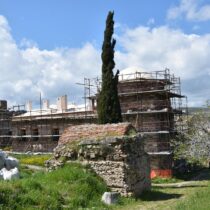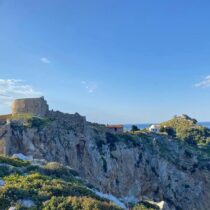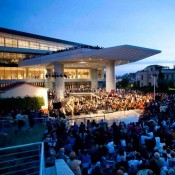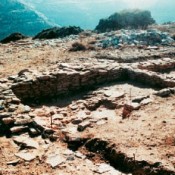1. Social and cultural aspects of tourism in Athens
During the four centuries of Turkish rule (1452-1828) Greece was hardly visited by foreigners. Travel contacts developed slowly but steadily during the first fifty years of independent national life. During the first decade the active involvement of foreign scholars (e.g. L. Ross, G. Muller, H. Ulrichs, A. Brandis, G. Finlay, N. L. Fraas, etc.) in the social and scientific life of young Greek society contributed even more decisively to Greece again approaching the family of European states.
Some rare exclusive visitors came to Athens on their own initiative on their way to lengthy trips in the Middle East, for example the German writer and landscape specialist Furst Puckler-Muskau ( Athens 1836), the French novelist Gustave Flaubert (in 1851) or the French philosopher Ernest Renan (in 1865) . They were considered as cultivated travellers (Bildungsreisende). Organized visits for tourists were still non existent. At the time some early photographers, mainly architects and draftsmen (e.g. G. M. Bridges 1848, J. Robertson 1850, A. Normand 1851 and F. A. Beato 1857) organized the first photographic campaigns in Athens, focusing mainly on the documentation of the city’s antique monuments. In these early days a special kind of group was to be seen on the Acropolis with the presence of crowds of young midshipmen from foreign fleets anchored in the bay of Phaleron. This was a calamity for the monuments as vividly described by Ross in his memoirs.
This period of individual travelling, during which organized tours were very rare,was followed -starting in the last decade of the 19th century- by an era of early group (not mass!) tourism.The guidebooks of Joanne Murray and Baedeker were indispensable travel companions. Their high standard still amazes us today.
Already, however in the 1890ies Mr.Cook in person visited Greece and conceived a vast program of regular tours. In 1914 an official office for tourism was founded, followed in the 30ies by a specific ministry for “Press and Tourism”. By the late 1920ies air connections had already been established between Athens and some European cities. The first tourist brochures were issued and for the first time ancient sites were “reanimated”. Cultural events with international appeal took place in Athens (performances of antique drama at the Odeion of Herodes Atticus, in Delphi in 1927, and the Delphic festival in 1930) and in Olympia (festivities in the Altis on the occasion of the 1936 Olympic Games). The elitist nature of the tourist flow to Athens and Greece persisted, however, until the Second World War. Immediately after the war there was a growing awareness in Athens of the inevitable opening up of the country to mass tourism. Today, package tours absurdly promise the tourist, two days in which to “do” the whole of Athens and all the museums of the city with a “comprehensive guided tour” and in the evenings still be able to be confronted with “real life” in the city’s central districts. In addition “experience” (the word education is strictly avoided) is combined with relaxation. Therefore groups of tourists are herded outside of Athens as soon as possible.
Today, although Greece still strives for “educational tourism” based on different itineraries, the flow has degenerated into a twofold phenomenon. Mass summer vacations on coastal regions and islands of an average duration of 8 days and a mass inundation of Athens for a ritual and rather unconcious visit of the famous “antiquities” in the polluted city by people anxious to leave the place as soon as possible.
2. Tourist infrastructure and tourist policy in Greece during the last decades. Tourism in Athens as an economic factor.Tthe city and its heritage as tourist attractions.
In the beginning of the 50ies Greek authorities became aware of the importance of tourism. With tourist planning came the generous expansion of central ports and airports.
3. The implications of the influx of tourists on the monumental heritage of Athens
Specific living habits and the rather low awareness (by the majority of Athenian population) of the artistic value of the city’s historical heritage create many varieties of exploitation of the different antiquities.
The wear and tear of the rock surface of the Acropolis, caused by the footsteps of millions of visitors, reached an alarming degree. By 1980 a light, reversible concrete covering was foreseen in situ in order to create a pedestrian pathway on the plateau. Visiting the interior of the Parthenon was prohibited. This brings us to the delicate problem of human behaviour in cultural public spaces. Visitors hinder one another in the crush of the crowd, and more so because their own physical presence is often so dense that it prevents the lower parts of the buildings or exhibits in the museums from being seen. The qualitative aspect of the phenomenon is in certain circumstances more serious than the quantitative one. The human mass does not assemble together as a visually indifferent entity dominated by the monuments,rather groups of people prevail, competing with the aesthetic appearance of the monuments. Thus, it seems that the openminded ,playful and “tactile” experience of historical sites combined with the security of the monuments care has still to be invented!



